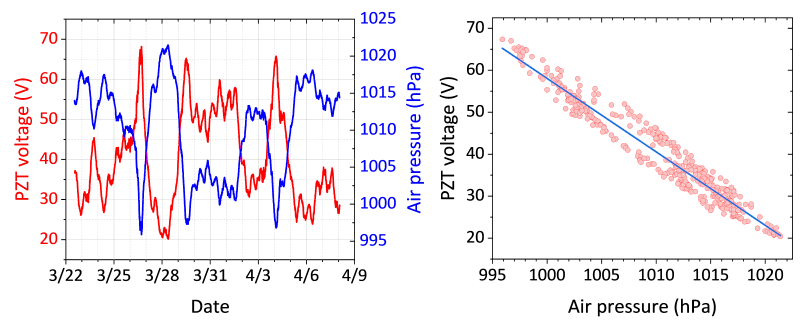Progress Report
Large-scale quantum hardware based on nanofiber cavity QED[3] Frequency-stabilized laser source system
Progress until FY2024
1. Outline of the project
To use quantum computers in society, we need to develop systems that can operate stably for long periods of time. In this case, frequency-stabilized laser sources are necessary for all hardware systems that use laser-cooled atoms and ions to function properly. Laser-cooled atom and ion experiments require lasers of different wavelengths. These wavelengths correspond to the transitions of atoms and ions.
These laser sources must be kept a constant wavelength (frequency). They also need to have extremely low phase noise (less than 1 Hz in spectral linewidth terms) and operate reliably for long periods of time. For this purpose, we chose external cavity diode lasers (ECDLs) as the laser source. These lasers can oscillate over a wide wavelength range, and they are compact and has long-lifetime.
However, ECDLs generally have low mechanical robustness against external disturbances, such as acoustic vibrations and temperature changes. They also exhibit significant phase noise without control. In this project, we aim to develop a compact, robust, and low-noise laser source system by combining our expertise in low-noise laser control with some techniques for dealing with external disturbances in ECDLs.

2. Outcome so far
Our group previously developed a low-noise laser source system that uses an optical frequency comb to cool atoms and observe their clock transitions. This system has been used as part of a clock in practice. In this project, we compared two stabilized lasers with two ultrastable cavities to evaluate their phase noise and frequency stability. Our results showed that the low phase noise required for quantum computers can be achieved.


(Top) Phase noise spectral density (Bottom) Raw signal spectrum
3. Future plans
To reduce the error rate, a laser source capable of exciting and de-exciting atoms with greater than 99 % fidelity must be developed. This requires precise control of power and phase noise. For implementation in real world, in addition, all controls must be robust, long-lasting, and compact. In this project, we will work to precisely control power and π-pulse duration to excite and de-excite atoms with high fidelity.
